-
 Bitcoin
Bitcoin $82,480.7409
-0.17% -
 Ethereum
Ethereum $1,761.8148
-1.29% -
 Tether USDt
Tether USDt $0.9992
-0.03% -
 XRP
XRP $2.0760
-2.34% -
 BNB
BNB $580.1097
-2.07% -
 USDC
USDC $0.9996
-0.04% -
 Solana
Solana $114.9273
-2.16% -
 Dogecoin
Dogecoin $0.1617
-3.26% -
 TRON
TRON $0.2394
0.23% -
 Cardano
Cardano $0.6249
-3.65% -
 UNUS SED LEO
UNUS SED LEO $9.0482
0.82% -
 Toncoin
Toncoin $3.3046
2.09% -
 Chainlink
Chainlink $12.2251
-3.18% -
 Stellar
Stellar $0.2510
-0.53% -
 Avalanche
Avalanche $17.1136
-4.11% -
 Shiba Inu
Shiba Inu $0.0...01188
-1.90% -
 Sui
Sui $2.0890
-4.58% -
 Hedera
Hedera $0.1546
-3.19% -
 Polkadot
Polkadot $3.8856
-0.65% -
 MANTRA
MANTRA $6.1711
-1.42% -
 Litecoin
Litecoin $78.7845
-4.33% -
 Bitcoin Cash
Bitcoin Cash $293.9171
-1.27% -
 Dai
Dai $1.0000
-0.02% -
 Bitget Token
Bitget Token $4.3417
-2.11% -
 Ethena USDe
Ethena USDe $0.9989
-0.01% -
 Pi
Pi $0.6205
-3.81% -
 Monero
Monero $211.2979
-2.19% -
 Hyperliquid
Hyperliquid $11.3176
-1.41% -
 Uniswap
Uniswap $5.6110
-3.44% -
 OKB
OKB $53.7230
6.42%
How do NFT Environmental Solutions reduce the carbon footprint of NFTs?
NFT environmental impact is being addressed through energy-efficient blockchain transitions (PoS), carbon offsetting, and optimized minting processes; however, transparency and scalability remain crucial for long-term effectiveness.
Mar 02, 2025 at 02:00 pm
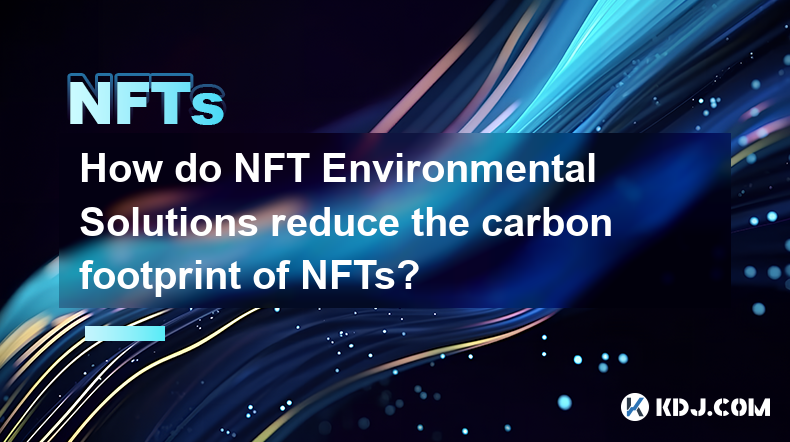
Key Points:
- NFT environmental impact stems primarily from the energy consumption of the blockchain networks they reside on (typically proof-of-work blockchains like Ethereum).
- Several solutions aim to mitigate this impact by shifting to more energy-efficient consensus mechanisms (proof-of-stake), utilizing carbon offsetting programs, and improving the efficiency of NFT creation and transaction processes.
- These solutions are still developing and their effectiveness varies depending on implementation and scale. Transparency and verification remain crucial aspects of their success.
How do NFT Environmental Solutions Reduce the Carbon Footprint of NFTs?
Non-Fungible Tokens (NFTs) have exploded in popularity, but their environmental impact has drawn significant criticism. The energy consumption of the blockchain networks supporting many NFTs, particularly those on proof-of-work (PoW) systems like Ethereum, is a major concern. This energy consumption translates directly into a carbon footprint, raising questions about the sustainability of the NFT ecosystem. Fortunately, several solutions are emerging to address this challenge.
One primary approach focuses on transitioning from energy-intensive PoW consensus mechanisms to more efficient alternatives like proof-of-stake (PoS). PoS networks require significantly less energy to validate transactions, drastically reducing the environmental impact per NFT. Ethereum's shift to PoS, for example, is a major step in this direction. The transition, however, is a complex process and takes time to fully implement.
Another strategy involves the use of carbon offsetting programs. These programs involve investing in environmental projects that reduce greenhouse gas emissions, effectively neutralizing the carbon footprint of NFT creation and transactions. Companies and individuals involved in the NFT space can purchase carbon credits to compensate for their energy usage. The credibility and transparency of these offsetting programs are crucial, however, to ensure their effectiveness.
Beyond algorithmic changes and offsetting, the NFT minting and transaction processes themselves can be optimized. Reducing the size of NFT files, using more efficient minting techniques, and batching transactions can all contribute to lower energy consumption. Developers are actively exploring and implementing these efficiency improvements.
Furthermore, the exploration and implementation of layer-2 scaling solutions offer a path towards reducing the environmental burden. Layer-2 solutions process transactions off the main blockchain, reducing congestion and the overall energy consumption of the network. This approach enhances transaction speed and lowers costs, ultimately contributing to a smaller carbon footprint per NFT.
Finally, increased awareness and responsible practices within the NFT community play a significant role. Educating creators and collectors about the environmental impact of NFTs and encouraging the adoption of sustainable practices is crucial for long-term change. This includes choosing platforms that prioritize energy efficiency and supporting projects committed to environmental responsibility.
The development and implementation of these solutions are ongoing and complex. Challenges remain, including the verification of carbon offset claims and the complete transition of all relevant blockchains to more energy-efficient mechanisms. The effectiveness of each solution also depends on its scale and implementation. Continued innovation and responsible practices are vital to minimize the environmental impact of NFTs and ensure the long-term sustainability of the NFT ecosystem.
Common Questions:
Q: Are all NFTs equally damaging to the environment?
A: No. The environmental impact varies significantly depending on the blockchain used, the minting process, and the size of the NFT. NFTs on energy-efficient blockchains like those using PoS have a considerably smaller footprint compared to those on PoW networks like older Ethereum.
Q: How effective are carbon offsetting programs for NFTs?
A: The effectiveness depends heavily on the credibility and transparency of the offsetting program. It's crucial to ensure that the offsets are genuine and verifiable, representing real reductions in greenhouse gas emissions. Some programs may be more reliable than others.
Q: What role do developers play in reducing NFT's environmental impact?
A: Developers are key to creating more energy-efficient NFTs. They can implement optimizations in minting processes, utilize smaller file sizes, and integrate with energy-efficient blockchains or layer-2 scaling solutions.
Q: Can I, as an NFT buyer, make a difference?
A: Yes! You can choose to buy NFTs from creators who prioritize sustainability, using energy-efficient blockchains and transparent carbon offsetting programs. Supporting these projects incentivizes environmentally responsible practices within the NFT community.
Q: What is the future of environmentally friendly NFTs?
A: The future likely involves a combination of technological advancements (like wider PoS adoption and layer-2 scaling), responsible practices within the community, and robust carbon offsetting schemes. The goal is to create a more sustainable and environmentally conscious NFT ecosystem.
Disclaimer:info@kdj.com
The information provided is not trading advice. kdj.com does not assume any responsibility for any investments made based on the information provided in this article. Cryptocurrencies are highly volatile and it is highly recommended that you invest with caution after thorough research!
If you believe that the content used on this website infringes your copyright, please contact us immediately (info@kdj.com) and we will delete it promptly.
- Bitcoin (BTC) Price Drops 33% as Credit Spreads Reach Their Highest Levels Since August 2024
- 2025-04-06 23:10:12
- Cardano (ADA) price has crashed by over 51% from its highest level in November last year, and technicals point to a further downside.
- 2025-04-06 23:10:12
- Bitcoin price today crossed the USD 83000 mark on April 6 2025
- 2025-04-06 23:05:12
- Arthur Hayes States Gold and Bitcoin Will Be the Best Hedges in Tariff Led New Trade Order
- 2025-04-06 23:05:12
- Elon Musk May Be One of Dogecoin's Most High-Profile Proponents, But He Has Clarified
- 2025-04-06 23:00:13
- Oh Whale Launches Purpose-Driven Presale with Ocean Conservation at Its Core
- 2025-04-06 23:00:13
Related knowledge
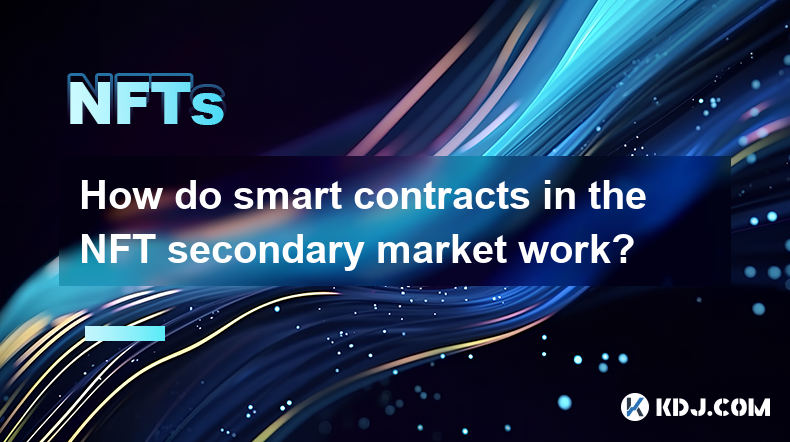
How do smart contracts in the NFT secondary market work?
Apr 03,2025 at 07:14am
Smart contracts play a pivotal role in the NFT secondary market, facilitating seamless transactions and enforcing predefined rules. These self-executing contracts with the terms of the agreement directly written into code are stored on the blockchain. In the context of NFTs, smart contracts automate the buying, selling, and transferring of digital asset...
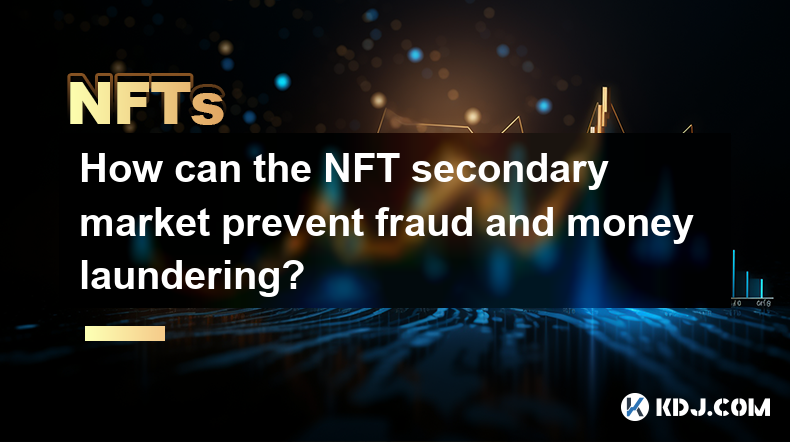
How can the NFT secondary market prevent fraud and money laundering?
Apr 03,2025 at 08:35am
The NFT secondary market has become a thriving hub for digital art and collectibles, but it also faces challenges in preventing fraud and money laundering. To tackle these issues, the market can implement various strategies and technologies to ensure a safer and more transparent trading environment. This article will explore how the NFT secondary market...

How are transaction fees in the NFT secondary market calculated?
Apr 04,2025 at 05:28am
The calculation of transaction fees in the NFT secondary market is a crucial aspect that both buyers and sellers need to understand. These fees can significantly impact the overall cost of transactions and the profits that sellers can make. In this article, we will delve into the various components that make up these fees, how they are calculated, and w...
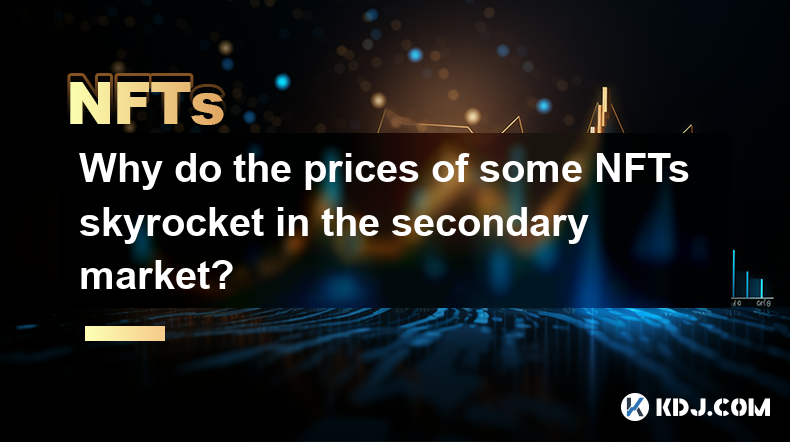
Why do the prices of some NFTs skyrocket in the secondary market?
Apr 06,2025 at 07:08am
The phenomenon of NFT prices skyrocketing in the secondary market is a fascinating aspect of the cryptocurrency and digital art world. Non-Fungible Tokens (NFTs) have taken the digital world by storm, and their value can surge dramatically after initial sales. Several factors contribute to this price surge, including rarity, demand, speculation, and the...
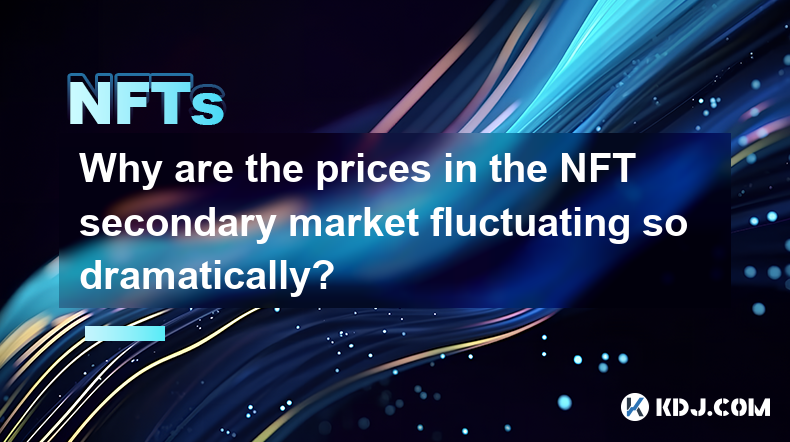
Why are the prices in the NFT secondary market fluctuating so dramatically?
Apr 03,2025 at 10:35pm
The NFT secondary market has been experiencing dramatic price fluctuations, leaving many in the cryptocurrency community puzzled and curious. To understand this phenomenon, it's essential to delve into the factors driving these price movements. From the impact of market sentiment and celebrity endorsements to the role of speculation and the unique natur...
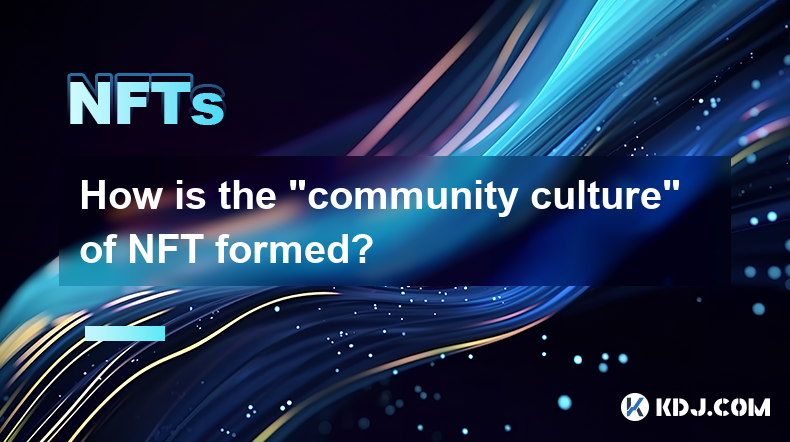
How is the “community culture” of NFT formed?
Apr 03,2025 at 11:07am
The formation of the 'community culture' within the NFT (Non-Fungible Token) space is a fascinating and multi-faceted process. It involves various elements such as shared interests, active engagement, and the creation of a sense of belonging among members. NFT communities often revolve around specific projects or artists, fostering a unique environment ...

How do smart contracts in the NFT secondary market work?
Apr 03,2025 at 07:14am
Smart contracts play a pivotal role in the NFT secondary market, facilitating seamless transactions and enforcing predefined rules. These self-executing contracts with the terms of the agreement directly written into code are stored on the blockchain. In the context of NFTs, smart contracts automate the buying, selling, and transferring of digital asset...

How can the NFT secondary market prevent fraud and money laundering?
Apr 03,2025 at 08:35am
The NFT secondary market has become a thriving hub for digital art and collectibles, but it also faces challenges in preventing fraud and money laundering. To tackle these issues, the market can implement various strategies and technologies to ensure a safer and more transparent trading environment. This article will explore how the NFT secondary market...

How are transaction fees in the NFT secondary market calculated?
Apr 04,2025 at 05:28am
The calculation of transaction fees in the NFT secondary market is a crucial aspect that both buyers and sellers need to understand. These fees can significantly impact the overall cost of transactions and the profits that sellers can make. In this article, we will delve into the various components that make up these fees, how they are calculated, and w...

Why do the prices of some NFTs skyrocket in the secondary market?
Apr 06,2025 at 07:08am
The phenomenon of NFT prices skyrocketing in the secondary market is a fascinating aspect of the cryptocurrency and digital art world. Non-Fungible Tokens (NFTs) have taken the digital world by storm, and their value can surge dramatically after initial sales. Several factors contribute to this price surge, including rarity, demand, speculation, and the...

Why are the prices in the NFT secondary market fluctuating so dramatically?
Apr 03,2025 at 10:35pm
The NFT secondary market has been experiencing dramatic price fluctuations, leaving many in the cryptocurrency community puzzled and curious. To understand this phenomenon, it's essential to delve into the factors driving these price movements. From the impact of market sentiment and celebrity endorsements to the role of speculation and the unique natur...

How is the “community culture” of NFT formed?
Apr 03,2025 at 11:07am
The formation of the 'community culture' within the NFT (Non-Fungible Token) space is a fascinating and multi-faceted process. It involves various elements such as shared interests, active engagement, and the creation of a sense of belonging among members. NFT communities often revolve around specific projects or artists, fostering a unique environment ...
See all articles





















































































